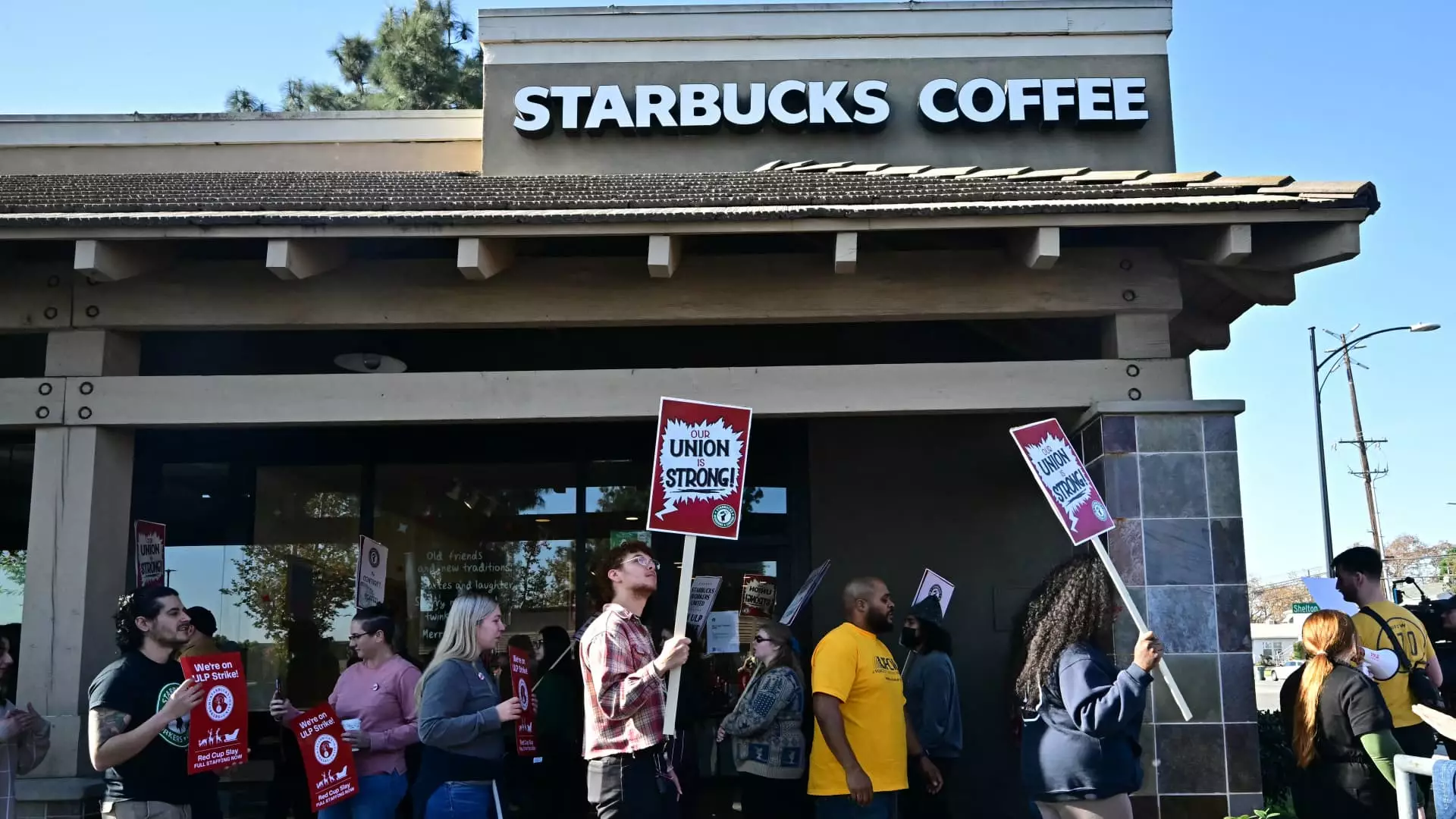In a significant development in the labor rights movement, Starbucks baristas are actively expanding their strike efforts, now encompassing around 5,000 workers across more than 300 stores in 45 states. This action coincides with Starbucks entering its peak holiday season, a critical time for the company. Although this strike represents merely 3% of the U.S. Starbucks locations, it marks a crucial escalation from initial protests that started last week in three cities. The strike is organized by the Service Employees International Union, in conjunction with Starbucks Workers United, and aims to highlight alleged labor injustices and the stagnation in contract negotiations affecting thousands of employees.
A prominent demand from the striking baristas is an immediate increase to Starbucks’ minimum hourly wage by an astounding 64%, with aspirations for a cumulative 77% increase over the next three years. These demands reflect widespread frustration among employees regarding their compensation and treatment within the company. Lynne Fox, president of the Workers Union, vehemently stated, “After all Starbucks has said about how they value partners throughout the system, we refuse to accept zero immediate investment in baristas’ wages and no resolution of the hundreds of outstanding unfair labor practices.” This quote encapsulates the essence of the workers’ discontentment, as they strive for recognition and fair treatment that matches their contributions to the company.
Corporate Response and Challenges Ahead
Starbucks’ management has responded to these demands with a message of concern, arguing that the union’s requests are “not sustainable.” In a company-wide memo, an executive pointed out the benefits package available to employees, highlighting that those who work a minimum of 20 hours a week earn, on average, $30 an hour when factoring in both wages and benefits. Starbucks executive vice president Sara Kelly claimed that the union had prematurely walked away from negotiations, expressing the company’s willingness to continue discussions when union representatives return to the bargaining table.
The labor dispute unfolds against a backdrop of recent leadership changes at Starbucks. The hiring of Chipotle’s former CEO, Brian Niccol, sparked a wave of investor enthusiasm, which unfortunately has since cooled, with the stock price declining in response to broader market trends. Niccol has indicated his commitment to engaging in good faith negotiations with the workers’ union. However, his prior term at Chipotle was characterized by a series of legal settlements related to worker demands initiated by the National Labor Relations Board, casting a shadow over expectations for a collaborative relationship with Starbucks workers.
Looking Forward
As the strike expands and negotiations remain stagnant, the events surrounding Starbucks’ labor disputes signal a broader trend in the retail and service sectors where workers are increasingly vocal about their rights and treatment. The outcome of this strike could significantly impact the company’s operational model and its relationship with employees moving forward. The eyes of the labor force—and perhaps the business community at large—are now fixated on how Starbucks navigates this contentious period and whether it will ultimately yield to the demands of its baristas for fair compensation and treatment in a rapidly changing economic landscape.

